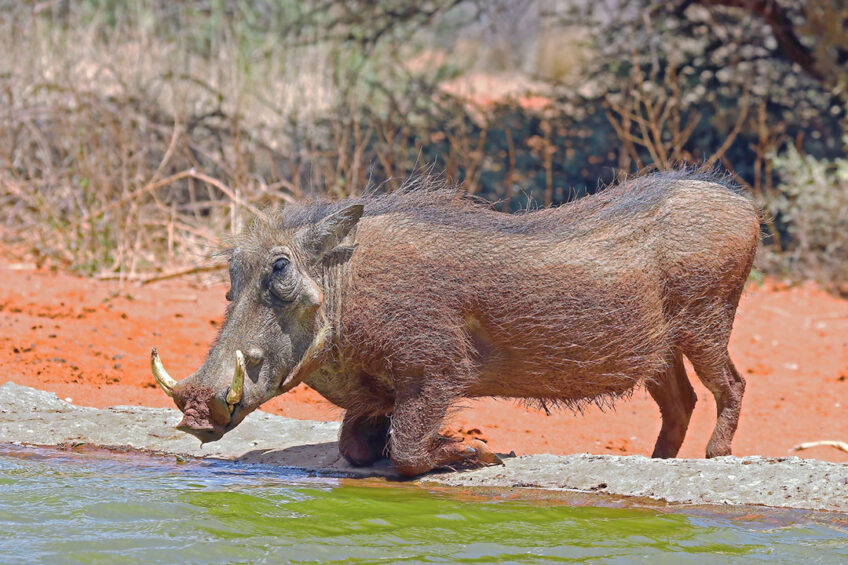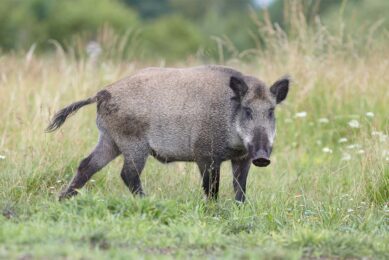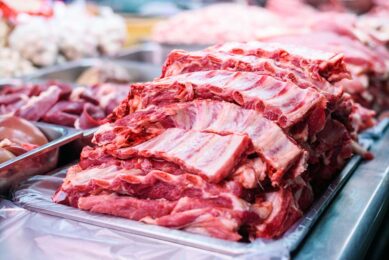Disease resistance: Host genetics can impact ASFv

Selection for disease resistance has long been considered a promising way to reduce disease prevalence. With the use of genetic markers, susceptible or resistant animals can be identified and a disease-resistant herd could be established. Could that pathway also work to contain African Swine Fever virus (ASFv)?
As is well-known, ASF impact depends on the virus virulence, the infectious dose and the infection route. On average, clinically recovered animals can continue to shed the virus for six weeks or longer. Warthogs and arthropod vectors of the Ornithodoros genus are natural hosts of the virus in which the infection is usually asymptomatic and persistent. In contrast, in domestic pigs it manifests as a haemorrhagic fever with a mortality rate up to 100%.
Sustainability of treatments
ASF disease control strategies currently come down to prevention or stamping out. There are often environmental and food safety–related constraints due to the impacts of chemical treatments as well as equity issues to do with the affordability and accessibility of treatments to poorer swine producers. Therefore prevention has more advantages than curing a disease. Different environmental and host factors – such as some metabolic diseases, host immune status, pregnancy or lactation – can affect pigs’ resistance to infectious disease.
Disease resistance
Disease resistance is the inherent capacity of an unexposed animal to resist disease when challenged by pathogens as well as the host’s ability to moderate the pathogen or parasite life cycle and to resist the disease consequence of infection.
There are several advantages to incorporating genetic elements into disease management strategies, such as permanence of established genetic change, consistency of the effect, absence of the need for purchased inputs once the effect is established, possibility of broad-spectrum effects and increasing resistance to more than one disease, and adding to the diversity of disease management strategies. Finding genetic markers associated with resistance to infection potentially allows selection for increased resistance in the absence of infection.
Marker-assisted selection
Marker-assisted selection is a process in which a morphological, biochemical or DNA/RNA-based marker is used for indirect selection of a trait of interest (e.g. disease resistance). The marker used for selection is associated at high frequency with the gene of interest due to genetic linkage. If a reliable marker for a lowly heritable trait is available, marker-assisted selection can result in greater progress than phenotypic selection.
The ability to survive infection with ASFv without developing marked clinical signs was observed in warthogs
Multiple markers can be evaluated using the same DNA sample, and once DNA is extracted and purified it may be used for multiple markers, for the same or different traits, thus reducing the time and cost per marker.
Genetic resistance to ASFv
The ability to survive infection with ASFv without developing marked clinical signs was observed in warthogs. Although the case fatality rate for domestic pigs infected with ASFv usually approaches 100%, there have been reports of individual domestic pigs surviving without developing marked clinical signs of ASF.
The gene associated with resistance to ASFv infection is called RELA. The gene causes the immune system to overreact once it detects the disease, which can have immediate destructive effects. Significant variation in the expression of the RELA gene between resistant and susceptible pigs is associated with host response to ASF infection. The RELA is part of the nuclear factor kappa-B transcription factor, which plays an important role in stress management and immune defence. However, further research is required to report the phenotypic data supporting the genetic resistance to ASF infection.
Potential mechanisms for host resistance
Replication of ASFv is lower in warthogs than in domestic pigs. Studies comparing in vitro growth curves in macrophages have not found any intrinsic difference in the ability of target cells to support the growth of ASFv between domestic and wild pigs. Therefore, it is likely that the innate immune system of these hosts is better able to control virus replication, resulting in a reduced systemic infection and reduced pathogenesis. On the other hand, host genetic factors and tolerance may reduce over-activation of potentially harmful responses and clinical signs.
Influence of host genetics
Variations in host factors between different pigs influence the outcomes of infection. Most reports of ASF in pigs describe similar acute disease form with high case fatality in all ages and breeds following infection with highly virulent ASFv isolates. However, there are reports indicating differences in susceptibility to ASF infection in some populations or ages of pigs. The percentage of older pigs surviving infection with a moderately virulent isolate was reported to be higher than younger pigs. There are contradicting results regarding inheritability of ASF resistance gene in pigs. Based on results of viral challenge experiments in Mozambique, resistance to ASF is not transmitted to offspring, but a similar study of longer duration in Portugal suggested that repeated inbreeding of pigs that showed resistance to the pathogenic effects of ASF virus resulted in an increased survival rate.
Future perspectives
Genetic modification can be a viable route to establish pig herds with increased resistance to ASF. Another possible means of attaining resistance involves the introduction of wild suid genetic material into domestic pigs. Identified gene sequences of ASF-resistant warthogs could be engineered into the domestic pig genome to generate pigs in which replication and/or disease burden after ASF infection is reduced. However, the likelihood of successful crossbreeding between the 2 species is very small as they are genetically distant. Additionally, a more effective strategy may be to target essential elements of the viral replication cycle such as virus entry to host cells.
Genetic engineering and genome editing can be an alternative line of investigation that holds promise for delivering results far more rapidly than traditional selective animal breeding approaches. Efforts are ongoing to have a better understanding of ASFv interactions with different hosts to improve control strategies for ASF and to help prevent global spread of this disease.
Conclusion
In conclusion, ASF is a contagious disease with a high potential for expansion to new areas where it can then rapidly spread and persist if early detection and strict control measures are not implemented. Mechanisms resulting in reduced viral replication and lack of disease in wild suids after ASF infection are largely unknown. Susceptible or resistant pigs can be identified using marker-assisted selection without subjecting them to a pathogenic challenge. Moreover, establishment of an ASF-resistant pig herd by using marker-assisted selection enables farmers and producers to control the disease, improve pig health and welfare and produce safe, high-quality pork.
 Beheer
Beheer








 WP Admin
WP Admin  Bewerk bericht
Bewerk bericht